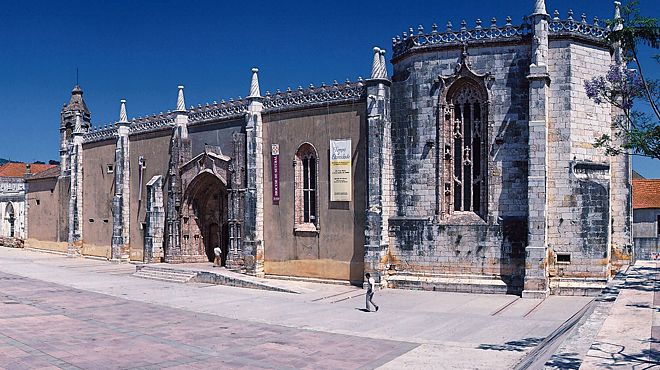Convento de Jesus - Setúbal

Convento de Jesus - Setúbal
Monuments
In the Largo de Jesus, in the heart of Setúbal's historic centre, there is the Convent after which the square was named. It was built on the initiative of Justa Rodrigues Pereira, lover of king Manuel I, by collecting a group of Franciscan nuns from the Order of Saint Claire. The project was designed by one of the royal court's favourite architects, Boitaca. He became one of the first to work on the Monastery of Jerónimos (Hieronymos).
Although it was severely damaged in the 1755 earthquake and had to be subsequently rebuilt, the structure retains many of its initial features including the church façade, the entrance and the Manueline style windows.
The interior takes on a salon type layout with the naves, of the same height supported by bust columns. The upper choir was reserved for the Clarissa nuns; the only place where they could attend mass as it was a closed order. The ogival crossed vaults are marvellous examples of the Manueline style. The main chapel is covered in green and white tiles dating from the 16th century. On the lateral walls, there are 17th century tiled panels depicting scenes from the Virgin's life.
The convent's outer buildings are currently take up by the Museum of Setúbal. Among the pieces in this notable collection are the Primitives of Setúbal, the 16th century Portuguese school of painting and a key stage in the history of art of Portugal.
Although it was severely damaged in the 1755 earthquake and had to be subsequently rebuilt, the structure retains many of its initial features including the church façade, the entrance and the Manueline style windows.
The interior takes on a salon type layout with the naves, of the same height supported by bust columns. The upper choir was reserved for the Clarissa nuns; the only place where they could attend mass as it was a closed order. The ogival crossed vaults are marvellous examples of the Manueline style. The main chapel is covered in green and white tiles dating from the 16th century. On the lateral walls, there are 17th century tiled panels depicting scenes from the Virgin's life.
The convent's outer buildings are currently take up by the Museum of Setúbal. Among the pieces in this notable collection are the Primitives of Setúbal, the 16th century Portuguese school of painting and a key stage in the history of art of Portugal.
Contacts
Address:
Largo Miguel Bombarda e Rua Acácio Barradas
2910-790 Setúbal
2910-790 Setúbal
Telephone:
+351 265 520 964
9am -1pm / 2pm - 5pm.; Closed: Monday




 Explore
Explore 
 Remember and Share
Remember and Share 


